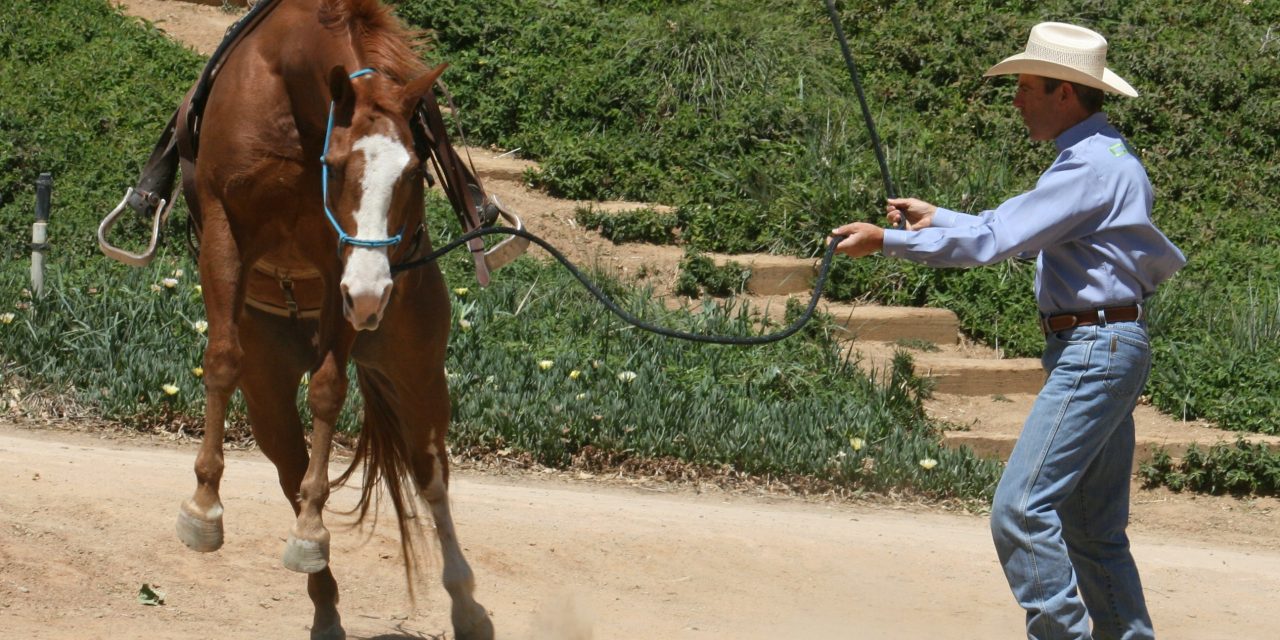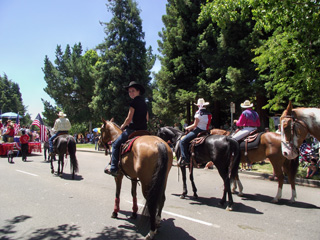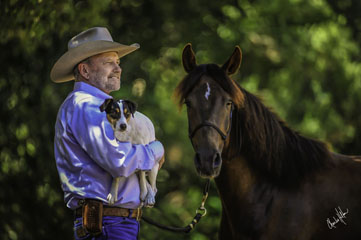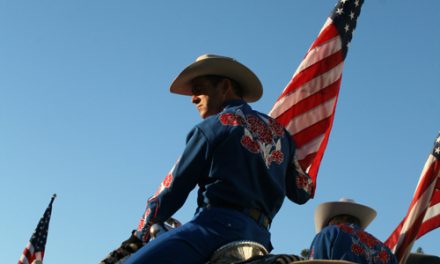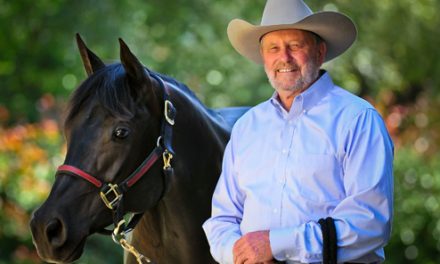PERFORMANCE HORSEMANSHIP WITH RICHARD WINTERS
I train horses in southern California. That means I have more riding days available to me than probably anywhere else in the United States. I was recently presenting at an expo in Wisconsin and realized that many of the attendees had not been able to ride for the last five months! Right about now, theses hardy mid-westerners will be getting out their horses to prepare for some spring and summer riding. While I was at the expo, I spoke to many folks about the importance of properly preparing their horses to be ridden after a lengthy time off. If they assume that their horse would feel like he did when they turned them out last November, they might be in for a big (bucking) surprise. That’s why an equine pre-flight checklist is so important.
A pilot always takes time to check out his aircraft inside and out before he taxies down the runway. The longer the plane has been sitting dormant, the more thorough the pre-flight check will be. My friends in Wisconsin haven’t ridden their horses for months. I know that most of those horses will be pretty fresh for the first couple rides. It’s even that way here at home. My young horses in training feel fresh on Monday morning, after only two days off! I can’t remove every variable, nor eliminate every risk. I can, however, prepare my horse physically and mentally before I step on and thus increase my chances for a successful ride. Below are a few ideas to get you started with your pre-flight checklist.
Begin With Ground Work
If you catch your horse and he seems distracted and full of himself, get him dialed in through ground work. Send him in some circles each way. Get his feet busy doing something productive. This can be done with a halter and lead (12’ long) or free in a round pen. Remember, you’re not just trying to chase him around until he’s sweaty and tired. You’re trying to exercise his mind. As you engage him mentally and get his feet busy, you’ll automatically exercise and warm up his body as well.
Saddle Your Horse Untied
If your horse has not been saddled for a while he could be cinchy and buck when you first tighten the girth. If he’s tied to a hitching post, this could turn into a big wreck. You can drape the lead rope over your arm (never wrap it around your arm), or you can have a helper hold the horse while you saddle him. The important thing is that you are aware of how your horse is reacting to the procedure and that you are adjusting accordingly. It’s always a good practice to make your cinching up process a two or three step procedure. Don’t tighten the cinch too snug all at once. Draw it up incrementally after you walk your horse out a few yards. Politely cinching your horse up in this manner will help prevent him from getting resentful being saddled. This will also possibly keep him from bucking if he tends to be cinchy or cold backed.
Send Your Horse Through The Full Range Of Motion While Saddled
I’m not going to get on a fresh horse, that I don’t know until I have the opportunity to move him around at the trot and lope (in both directions) while saddled. You can saddle a horse and lead him around for an hour, then step on and promptly get bucked off. Until I see that horse travel through the full range of motion with the saddle on, I really don’t know if he’s prepared or not. The saddle feels different at the trot than it does at the walk and different still at the lope. It also feels different when the horse turns and pushes off in a new direction. Again this can all be done on the end of a lead rope or you can work him at liberty in a round pen.
What Am I Looking For?
I want to see the horse traveling around relaxed and in an efficient manner. In other words, if it takes twenty pounds of energy to lope around this circle and the horse is putting forty pounds of energy into it, then I’m not interested in getting on yet. I’m looking for smooth transitions and a level top line in my horse’s profile. Whether this part of the pre-flight takes five minutes or twenty-five minutes, I’m going to continue until my horse is mentally and physically warmed up and in a receptive frame of mind.
Don’t Wait Around – Get On!
After my horse is warmed up and moving out relaxed with the saddle, I’m going to get on. Waiting too long to mount, after the ground work, might put you back where you were before you warmed your horse up. This is especially true with green horses and those just being started. When you give them too much down time before mounting, they’ll forget what everything felt like when moving around the pen and buck you off when you do ask them to move out.
Remember, your horse is an animal. Not a machine. He’s not like a golf cart that can sit in a garage for weeks and then have you jump in and take off. Your horse is simply an attitude with four feet! Don’t be the one that emails me this spring saying. “I don’t know what happened. I saddled him up and got on. Everything was fine and all of a sudden, for no reason…” What they are really saying is “All of a sudden, for a reason that I was oblivious to, he….”
With proper prior preparation you won’t have to be one of these folks. Knowing what to look for in a pre-flight checklist can go a long way in keeping you and your horse out of trouble and ready to fly. (I mean ride!)

